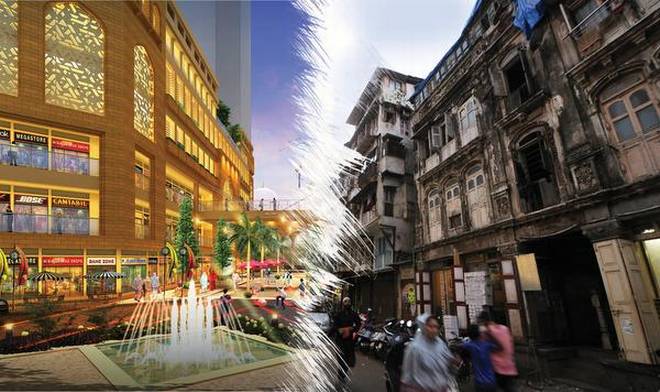The poorly-design, badly-built, insensitively-planned buildings that are so common across Mumbai, India are the result of opportunistic redevelopment. But that’s only half the story. Many people were displaced–often without compensation or arrangement for new quarters–to make room for these profit-driven monstrosities.
Abbas Master, CEO of the Saifee Burhani Upliftment Trust says the Hussaini Tower is a typical example of a structure that makes holistic development of the area around it extremely difficult. “It is built on a single plate and has no relation with any of the structures around it.”
There is a need for a more rigid legal framework. A mechanism should be devised where owners are compensated adequately and this mechanism should be well defined. Also, Master says, “tenants living there should be assured of getting their area back, and for commercial tenants, some incentive should be given, perhaps with the promise that they will get 20 per cent or more of space.”
The greater good cannot be an abstract concept forced on a community from above. “There are four key partners in this: the tenant, owners, government and developers. All four need to be adequately incentivised” Master continued.
On the positive side, two outstanding features of the Bhendi Bazaar cluster redevelopment that could be adopted as best practice are the people-focused design, and the provisions made for transit housing. The ways that the Trust handled this played no little part in getting the community to buy in.
Rehabilitation projects by the municipality have faced huge resistance because of the public transit facilities were too far away from the housing, forcing the residents to drastically alter their lives. To ease the fears of residents about having to move out and find other places on rent, the Trust acquired land and built transit homes at Anjeerwadi, just three kilometres from the project, and also leased apartments from Maharashtra Housing and Area Development Authority (MHADA).
“It is very important that the lives of the tenants should improve while in transit itself, so that they get a first-hand experience of a contemporary living environment,” Mr. Master says.
Bhendi Bazaar has, in effect, a single owner, since the SBUT bought the land, Architect Kamu Iyer says. This made amalgamation of the plots easier. For any other developer, this alone would be a significant stumbling block, and could explain why no other significant cluster redevelopment projects have taken off.
“However, cluster development is possibly the only way to now go about redeveloping the city. If you see the new high-rises that have come up in areas like Dadar for instance, these are inhuman constructions, built so close to each other with all kinds of safety norms foregone. In that sense cluster development make sense because it is the only way to amalgamate the plots and have more open spaces,” Iyer continued.
See full article by Jiyant Sriram in The Hindu + image credit.

